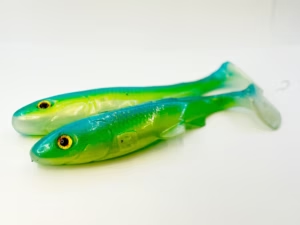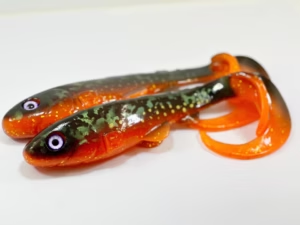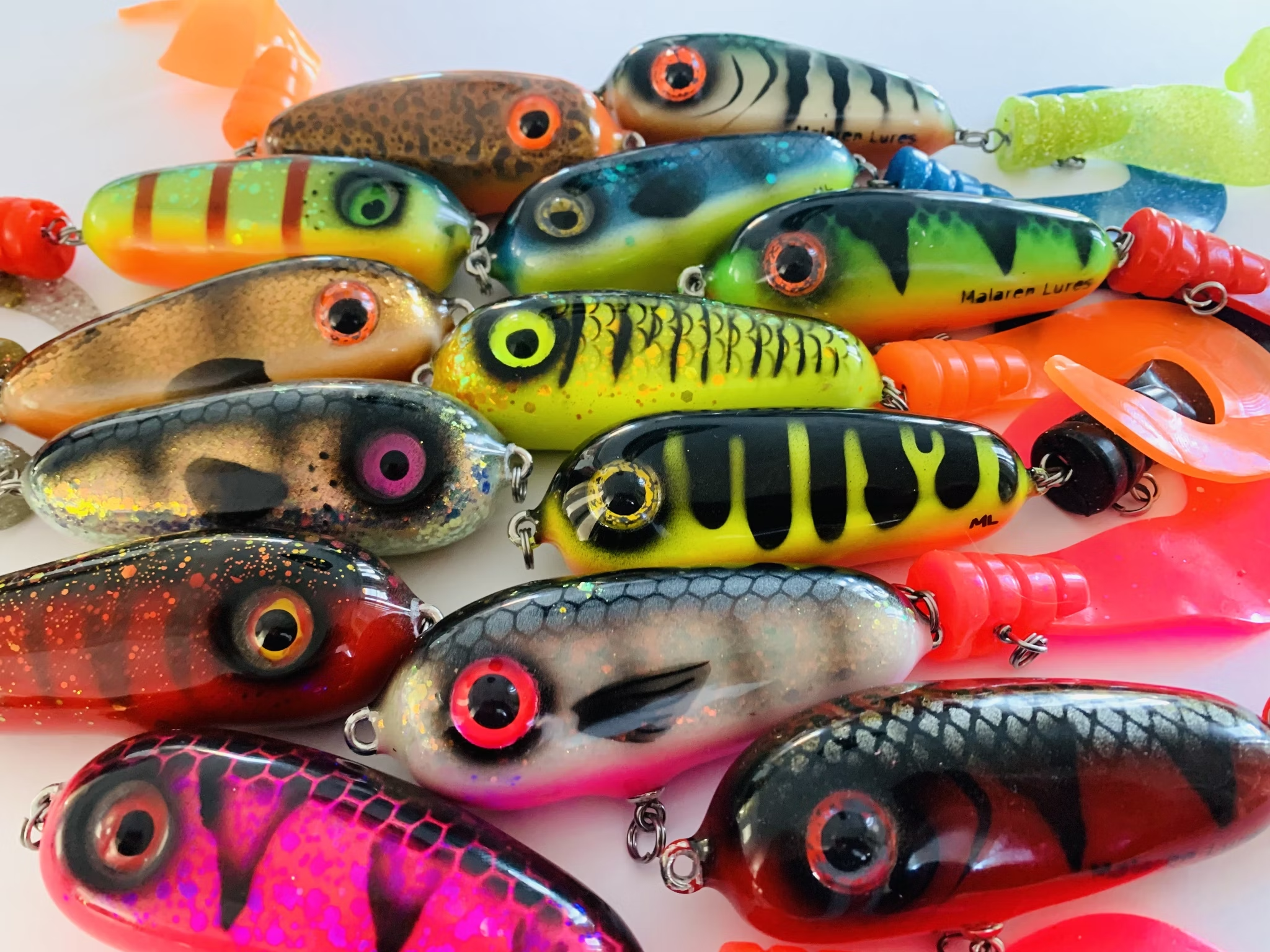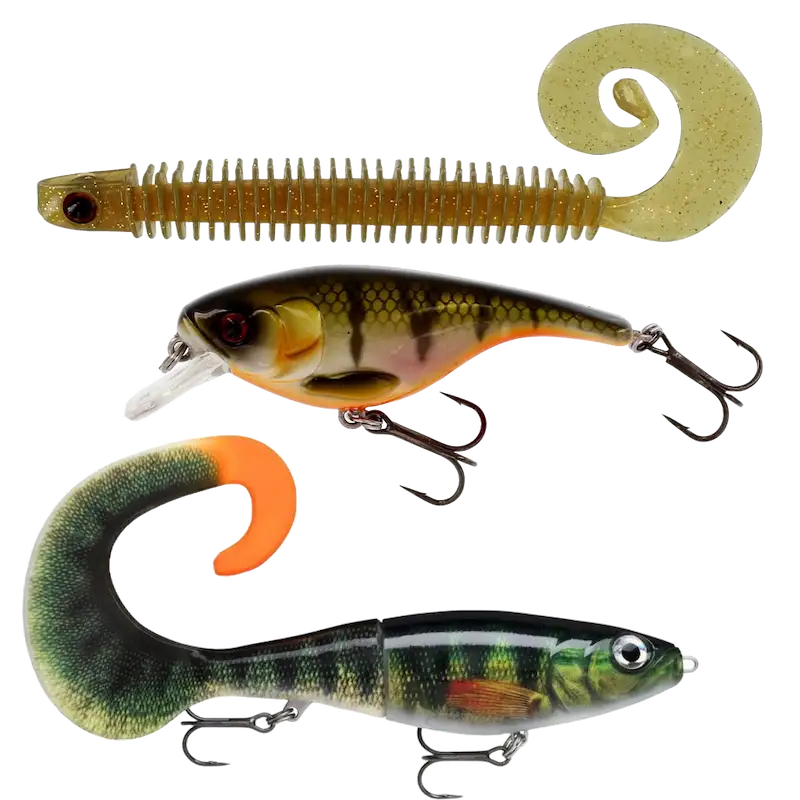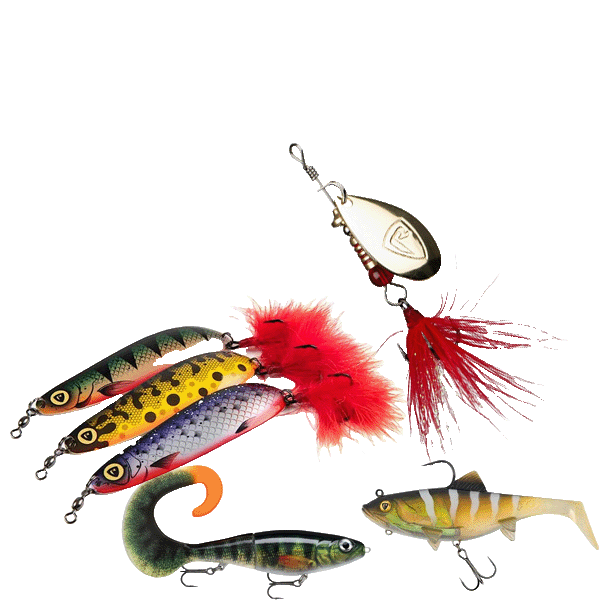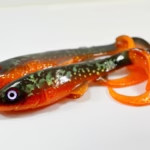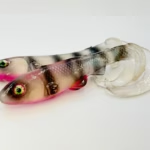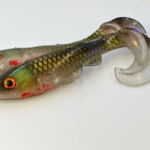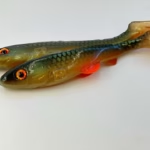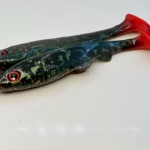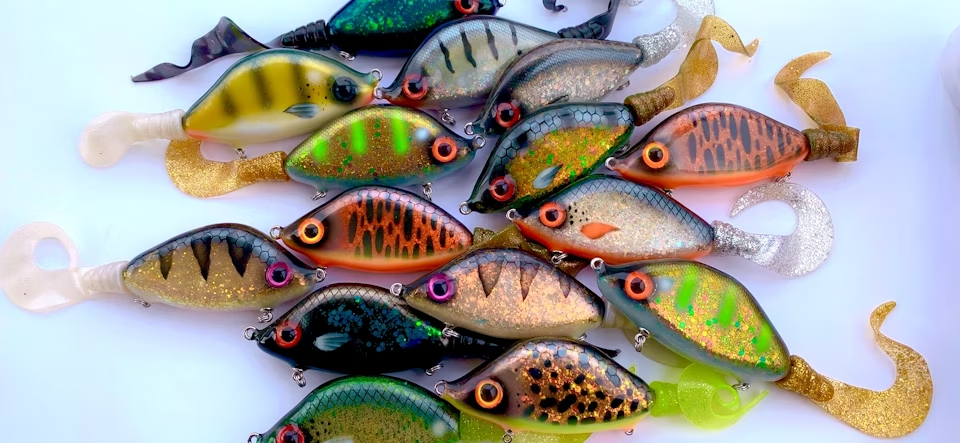
Jerkbait Review: The Humpack Original
For many, fishing is a lifelong pursuit. Those rare moments when the water explodes and the battle to reel in your catch begins are electrifying. The right lure turns routine casts into stories worth telling. And you can do that with the Humpack Original. Outsmart predators and put real results on the bank. Let’s look at how this single lure can turn ordinary sessions into something memorable, all while fitting right into the palm of your hand.
What’s in a Jerkbait?
Jerkbaits have a special place in the angler’s arsenal. No other lure produces quite the same combination of erratic movement, visual flair, and adaptability across seasons. These lures are built for one purpose: to mimic the sudden, vulnerable movements of a wounded baitfish. Fish see an opportunity for an easy meal. The Humpack Original is designed to accentuate every aspect that makes jerkbaits effective — right down to the last detail.
Core Characteristics of Jerkbaits
A true jerkbait is designed for chaos. With every flick of your wrist, it slashes from side to side, stalling in the water with sudden, panic-filled pauses. That momentary stop is irresistible to predators.
What you’re after is a bait that looks like it’s barely hanging on. A fish in trouble per se. The Humpack Original pulls this off brilliantly. Its slightly wider body gives it a presence underwater, throwing off flashes of light in every direction. Predators zero in on that shimmer.
Then there’s the sound. The built-in rattle emits a steady click as the bait moves. Sound travels further underwater than you might expect—drawing fish from the fringes of the strike zone. This audio cue, when paired with a big, rolling body and unpredictable gait, gets results.
Jerkbaits like the Humpack Original are engineered to provoke. Every snap, every sudden stop, every flash of the scales is a calculated move. The goal is to trigger an attack response.
Weighting, Balance & Castability
There’s nothing worse than a lure that won’t cast far or tumbles through the air like a leaf. The Humpack Original, at approximately 115 grams and 13 cm long (without the tail), is weighted for long, accurate casts. You’ll notice the difference on windy banks, or when you need to reach a far-off target zone.
But casting distance is only half the story. Once in the water, a jerkbait must maintain balance—a trait that separates a premium lure from a bargain bin reject. The Humpack Original is a slow-sinking model. This means when you pause, it doesn’t nose-dive or float off awkwardly. It suspends—almost hovering. That hang-time, combined with its wide body, makes every pause look like a split-second opportunity for predators to commit.
The careful internal balance keeps it stable, even when you work the rod tip aggressively. It’s this predictability that lets you experiment with retrieve speeds, cadence, and rhythm, all without worrying about the lure spiralling out of control.
Visual & Acoustic Attraction
Fish hunt with all their senses. The best jerkbaits tap into this, combining visual triggers with sound cues. The Humpack Original is designed to play on both.
Let’s start with the visual side. The lure’s finish is built to catch light from every angle, mimicking the natural scales of a small fish. Every jerk sends a ripple of flash outwards. In clear water, this makes the lure almost impossible to ignore. In murkier water, that flash becomes a bright spot in a sea of gloom.
Sound is just as important. The Humpack’s internal rattle delivers a sharp, steady click. Predators are tuned to these cues, especially in pressured fisheries or low-visibility conditions. You’ll find that fish often strike just after a series of sharp clicks, when the lure comes to rest.
This two-pronged approach—sight and sound—ensures your lure stands out, even in busy venues or tough conditions.
What Makes Humpack Original Unique
Physical Design & Build Quality
Every lure is built with individual attention—no mass-produced shortcuts, just old-school dedication to quality. The moment you hold one Humpack Original, you notice the weight and balance. The slightly curved, wider-than-average body is a deliberate design choice. It creates a more imposing underwater silhouette and adds unique movement to each retrieve.
The detail doesn’t stop at the shape. The lure’s finish is meticulous: bold, realistic eyes that fixate predators, a pattern of holographic scales, and a tough, glossy coating that shrugs off abrasions. These features are intentional. Predatory fish often aim for the head, so those oversized, 3D eyes increase your chances of getting results.
Hardware is a major selling point. The stainless steel spiral allows you to change the tail or add a paddle within seconds. Want to experiment with action or target different species? Swap the tail without fumbling. Every ring and split is corrosion-resistant and beefed up to handle brutal head shakes from pike or zander.
Paint durability is another standout. You’ll notice how well the Humpack Original resists chipping, even after dozens of strikes and skimming over rocky shallows. This is more than cosmetic—it keeps your lure attractive, fish after fish, trip after trip.
Action in the Water
There’s nothing average about the Humpack Original’s performance. This lure is all about customisation. On a straight retrieve, it already moves with a gentle side-to-side sway. But bring in the rod tip, and things get lively with sharp twitches and slack-line pauses. The lure darts left, right, even slightly upwards, before coming to an abrupt, trembling halt. Fish see that hesitation and react—hard.
The lure’s “hang time” adds to this. It’s built to hover, showing its broadest flank to following predators. Experienced anglers know that most strikes come not during motion, but in those crucial moments when the lure appears most vulnerable—just hanging there, shimmering, belly exposed. The Humpack’s unique body shape exaggerates this pause, making the action even more convincing.
The built-in rattle never stops working. Every jerk sends a series of sharp clicks through the water, echoing outwards. This attracts fish from further away, especially in turbid or pressured waters where visibility is low. Combine this with the lure’s wide roll and constant flashing, and you have a lure that keeps getting noticed by hungry fish.
Try varying your retrieves—short, snappy jerks followed by long, slow pulls, or quick, double-twitches then a dead stop. The Humpack Original handles it all, keeping its orientation and flash no matter how aggressively you work it.
Materials and Hardware Specs
A premium jerkbait is only as good as its components. The Humpack Original’s body is made from hard plastic—chosen for its resilience and casting consistency. Unlike softer plastics that absorb water or warp, this material stays true through season after season.
The stainless steel spiral stands out. It’s not just for easy tail swaps. It locks the tail in securely, even after repeated casts and aggressive hits. Want to add a soft plastic paddle for a bit more action? It’ll stay put. Every split ring and treble hook is built for punishment—strong enough to handle pike, zander, and surprise bonus fish without bending or snapping.
Paint and finish are equally robust. The glossy, bonded finish is layered and heat-cured, so colour stays vibrant and won’t fade or chip off after heavy use. This matters—worn lures lose their flash and become less effective. Every component, from the 3D eyes to the weighted core, is there for a reason. The careful weighting inside the body ensures the lure suspends naturally and moves predictably, regardless of your retrieve speed or water temperature.
Hardware maintenance is simple, too. Rinse after saltwater use, check split rings for any gaps, and keep hooks razor-sharp. This way, your Humpack Original stays reliable for seasons.
Depth Range and Versatility
Not every predator feeds at the surface. The Humpack Original’s slow-sinking design allows you to fish at a wide range of depths, typically reaching about two metres before starting your retrieve. Want to target fish holding just above a submerged weed bed or alongside a sunken tree? Count the lure down and pause right in the strike zone.
You’re not limited to one style, either. This jerkbait responds to subtle twitches, aggressive rips, and slow pulls equally well. Whether you’re fishing for bass in clear lakes, pike in deep gravel pits, or zander in slow-moving rivers, the Humpack Original has you covered. Its versatility is especially handy when fish are fussy—change the retrieve, tweak the cadence, and experiment with pause length until you get results.
This makes the lure an asset in all sorts of situations: snaggy swims, open water, tight margins, or heavy cover.
Designing for Precision
Predictable action is vital for building confidence. The Humpack Original is precision-balanced for ultimate control. Give it a short, sharp twitch and it darts away—pause, and it suspends perfectly. Its wide body and tailored weighting prevent roll-overs or unnatural tumbles, so you can trust it to behave exactly how you want.
Responsiveness is at the core of its design. Slack line after each jerk lets the lure glide and flash unpredictably—never robotic, always natural. The more you experiment, the more you’ll appreciate how each tiny adjustment in your rod or retrieve produces a unique response.
If you’re the sort of angler who likes to experiment and fine-tune tactics, this lure won’t disappoint. It’s a true “feel” bait—every little change in movement comes through loud and clear.
How to Fish the Humpack Original
Recommended Rod, Line & Setup
The right kit transforms your entire jerkbait experience—and with the Humpack Original, every detail counts. Let’s start with your rod. For jerkbaits, you need something that’s both responsive and forgiving, ideally a medium-fast or fast action model. This gives you the control to snap the lure into action, but enough softness at the tip to avoid pulling hooks free on those sudden, savage strikes. Most anglers find their sweet spot with a rod between 6’6” and 7’6”. If you’re bank fishing on a breezy day or casting from a boat, that extra length also lets you launch your Humpack further and with more accuracy.
Sensitivity matters. There’s nothing quite like feeling every vibration, every subtle nudge, echoing down the blank. Jerkbait fishing is tactile. The rod becomes an extension of your hand, letting you read the lure’s action and react instantly to taps and plucks. Try a rod with lightweight guides for maximum feedback. Some high-end rods even have split-grip handles, making it easier to work your lure for hours without fatigue setting in.
Now, on to the line. Braid is popular for good reason—almost zero stretch, razor-sharp sensitivity, and the ability to cut through weed beds or thick cover. However, braid alone is too visible for wary fish, especially in clear water. That’s why a fluorocarbon leader is essential. Fluorocarbon’s sinking nature helps your jerkbait get to its target depth, and its near-invisibility is perfect for pressured venues or spooky predators. A 20-30 lb braid with a 10-15 lb fluorocarbon leader is a versatile starting point for most scenarios.
The reel is your next critical component. Look for a smooth, robust drag and solid line lay. Baitcasters allow micro-adjustments to casting and retrieval speed, which can make a huge difference when fish are finicky. Spinning reels, on the other hand, are often the first choice for new jerkbait anglers because they’re so forgiving. No matter your choice, make sure your reel matches your rod for balance and comfort—fatigue is the enemy of long sessions.
Don’t neglect the hooks. Out of the box, the Humpack Original sports quality trebles, but don’t be afraid to swap them for premium, wide-gap options—especially if you’re fishing for pike or zander. A file or sharpening stone should always be in your tackle bag. Blunt hooks miss fish, but a quick tune-up keeps your connection solid. Regularly check all hardware for damage; split rings and the stainless spiral take a beating over time. Tighten up anything that feels loose, and you’ll fish with total confidence.
Casting & Retrieve Techniques
Mastering jerkbait retrieves takes practice. For your cast, always aim for areas holding fish, like points, drop-offs, submerged timber, or the outer edges of weed beds. Cast well past your target zone if possible. This lets the lure reach its working depth naturally before entering prime territory, presenting a more realistic target.
When the lure lands, let it settle. A slow count to three is often enough, but sometimes you’ll want to experiment—counting down to the precise depth where fish are holding, especially in deeper or cooler conditions. Now comes the signature move: snap the rod tip down or to the side with a crisp jerk. Instantly, give slack—this allows the Humpack Original to glide and shimmer, flashing its belly and flanks. Slack is essential. Without it, the lure just swims back to you without the erratic action that triggers predatory instincts.
No two retrieves should be alike. Change up your cadence constantly. Try a “one-two” snap with a three-second pause. Try three quick twitches, then let the lure hang for five seconds. Fish are unpredictable, so your retrieve should be too. Some days, the aggressive, panicked action draws violent hits. On other days, it’s a long, slow pause that gets a cautious fish to commit.
If you see a fish following but not striking, resist the urge to move the lure again immediately. Pause longer—sometimes as much as eight or ten seconds. The Humpack Original is designed to hang perfectly, its wide body shimmering, just daring a fish to attack. If you miss a strike, accelerate your retrieve for a few seconds; predatory fish often respond to what looks like a fleeing bait.
When fishing tight to structure or in snaggy areas, use sharp, upward snaps to keep the lure above trouble. The durable build of the Humpack means you don’t have to worry about the odd knock on a submerged branch or boulder. In open water, sweeping pulls followed by slack let the lure cover more territory, increasing your odds.
Water temperature makes a difference. Cold water calls for slower, more deliberate movements—think longer pauses, fewer twitches. Warm water or feeding frenzies in summer? Go for rapid, unpredictable motion. The lure’s design excels at both ends of the spectrum, giving you flexibility on any day.
You can also “deadstick” the Humpack—let it rest motionless for extended periods, then give it a sudden twitch. This move is especially deadly in ultra-clear water or during cold snaps when fish are slow to chase. Every subtle movement ripples out, catching the attention of anything nearby.
Seasonal & Environmental Applications
Each season brings its own challenges and opportunities. In spring, predators push shallow to spawn and feed aggressively. This is the time for bold, energetic retrieves: sharp snaps, brisk twitches, and short pauses. Early mornings and late afternoons are especially productive when light is low and fish feel safe venturing into the margins.
Summer is all about versatility. Fish may be deep during the midday heat, but move shallow to hunt at dawn or dusk. Slow your retrieve, use longer pauses, and switch to natural colour patterns if water clarity allows. The Humpack’s ability to mimic subtle, dying baitfish gives you the edge here. Use the rattle and a gentle cadence to coax out reluctant bites.
Autumn is a feast-or-famine period. As temperatures drop, fish gorge to build reserves for winter. Speed up your retrieves, use aggressive snaps, and cover more water. Try different depths until you find the feeding zone—fish may be on the bottom one day and cruising mid-water the next. The slow-sinking profile of the Humpack Original jerkbait lets you adjust instantly, making it a perfect tool for autumn’s moody conditions.
Fish metabolism over Winter slows, so use minimal movement. Let the Humpack Original jerkbait hang for ten seconds or longer between twitches. Focus on deeper areas with stable temperatures—fish often cluster on drop-offs or in the shelter of submerged features. The lure’s slow descent and realistic hang time shine in these conditions, tempting bites when almost nothing else will.
Water clarity changes your strategy, too. In crystal-clear lakes and rivers, flashy finishes and subtle action are key. Use lighter line and gentle retrieves to avoid spooking cautious fish. In murky or coloured water, go bold—choose darker patterns, make use of the rattle, and use a more aggressive cadence. Fish rely more on vibration and silhouette when they can’t see well, and the Humpack’s wide body excels at both.
Always adjust your approach to match weather and light conditions. Overcast days allow for more adventurous, visible movement, while bright, cloudless skies often mean slowing down and keeping your presentation subtle. Adapting is everything.
Targeted Species & Structure
The Humpack Original is a predator magnet. It’s highly effective for species like bass, pike, perch, zander, and chub, but also tempts surprise guests like trout and even the occasional large perch in mixed fisheries. To make the most of this versatility, focus your efforts around prime ambush points: weedlines, overhanging trees, rocky outcrops, submerged timber, and the transitions between deep and shallow water.
Approach each swim with a plan. Cast parallel to cover, working the lure along weed edges or the shadow lines created by snags. In deeper lakes or rivers, try fan-casting—covering water in an arc to locate active fish. The slow sink of the Humpack keeps it in the strike zone longer, giving you more time for wary fish to inspect and attack.
Don’t shy away from heavy cover. The robust body and quality hardware mean you can pull the lure through snaggy swims with confidence. If you do get hung up, a gentle upward twitch often frees the lure without damage. Sometimes, the most memorable fish come from right in the thick of it.
Pay attention to how fish behave in each venue. Sometimes they hold tight to the bank, especially in coloured water or during early mornings. Other times, you’ll find them patrolling open flats or staging on mid-river humps. Adjust your tactics as needed—no two days are the same. Use local knowledge, watch for signs of life, and let your lure do the talking.
Optimising Performance ‘DIY’ Style
Fine-Tuning Action Through Weighting
Many serious anglers know there’s no such thing as a “one size fits all” lure—especially when it comes to jerkbaits. The Humpack Original already stands out, but you can push its performance further with a bit of tinkering. Fine-tuning the sink rate and hang is an old-school trick that makes your presentation perfect for the conditions you face. Want your Humpack to hang perfectly in a slow current? Or maybe you want a nose-down drop for pike holding near bottom? You’re only a few tweaks away.
Start with weight. Most use thin lead wire, adhesive strips, or tiny split shots, wrapped or stuck along the hook shanks or under the belly. Solder is another option for those who want something permanent and low-profile. Add a little at a time, testing after each tweak until you see your lure hovering or sinking at exactly the speed you want. For those who fish deep, a touch more weight makes your jerkbait punch through the upper water faster and reach fish lying low. If you’re targeting shallow weedbeds, lighten up or remove weight so your lure lingers higher.
Keep records—seriously. The best anglers make quick notes on what worked: “+1g belly, hangs level, 4°C water, slow sink, two pike.” You’ll build a playbook for every condition. If your Humpack starts rolling on the pause or nosedives too sharply, take weight off or shift it forward/backward. Testing in a bucket or clear water before you hit the bank helps you spot any oddities before they cost you fish.
Weather can influence your weighting, too. In colder water, fish are sluggish, so a slower fall and longer hang is usually better. In spring and autumn, a slightly faster drop can catch the eye of aggressive, cruising fish. Adjust not just for season, but for water temperature and the species you’re targeting. Never settle. There’s always another tweak, another gram, another subtlety that can put you ahead.
Enhancing Flash & Appearance
Sometimes you want your lure to stand out—or blend in—just a bit more. A popular trick is to add reflective tape, nail varnish, or subtle touches of metallic paint along the flanks or belly of the Humpack Original. The aim is to amplify flash without overdoing it. You can experiment with holographic tape, used sparingly, to catch sunlight and create intense bursts of reflection as the lure jerks and twists.
Light sanding can slightly roughen the surface, giving a unique, “aged” look and altering the way light bounces. Sometimes, this little edge fools the wariest fish in pressured waters. Others add a thin coat of clear lacquer, not only to enhance flash but to protect the original paint from teeth and rocks.
You can even create “injury marks” with red paint or marker near the gill plates or tail—mimicking a wounded, easy meal. Be careful not to overload your lure with heavy coatings or thick layers; too much modification can throw off the delicate balance and natural movement. Always test in water after any change. A truly bespoke lure that shimmers just right can become your confidence bait—something you reach for when nothing else gets a look-in.
Hook Upgrades & Maintenance
Hooks are the final connection between you and your catch—don’t let a dull point or bent wire cost you. Although the Humpack Original is fitted with strong trebles, you can go ahead and upgrade to chemically-sharpened, wide-gap versions for a better hook-up ratio, especially when targeting toothy or hard-mouthed species. Swapping out trebles is straightforward: use quality split ring pliers and match the hook size to maintain the lure’s action and balance.
Before every trip, make sharpening hooks a ritual. Use a diamond file or fine stone to hone each point. You want hooks that bite with the lightest pressure. On tough days, a sharper hook is often the difference between a solid fish and a story about the one that got away.
Maintenance doesn’t stop there. Inspect every ring and the stainless spiral regularly for salt corrosion, stress cracks, or gaps. Even the best hardware wears down with repeated abuse from rocks, pike jaws, or just hard fishing. Replace any suspect parts immediately—better to spend a minute by the water than risk a heartbreak later. Lubricate any moving hardware with a drop of reel oil if needed, especially if you fish salt or brackish venues.
Some anglers go further, swapping out split rings for beefed-up versions or using shrink tubing to keep trebles from tangling on the cast. Others switch to single hooks for catch-and-release, reducing injury to fish while keeping hook-up rates high with barbless, ultra-sharp points. Your hardware is personal—make it match your style, your water, and your targets.
A well-maintained Humpack Original not only lands more fish but lasts for seasons. Make regular checks part of your fishing routine. Prevention is always better than a heartbreaking loss at the net.
Common Mistakes & Troubleshooting
Overworking the Bait
Overworking the bait is one of the most common—and costly—mistakes jerkbait anglers make. It’s easy to fall into the trap of thinking more movement equals more attraction. In reality, too much rod action or non-stop twitching can make the lure look unnatural, causing cautious fish to back off. Remember, the Humpack Original is built to glide, dart, and hang just like a struggling baitfish. Your job is to trigger those lifelike pauses and shifts in direction, not to make it sprint like a minnow on the run.
After each jerk, give plenty of slack line. This allows the bait to “glide” or “slide” out to the side, letting the natural action of the lure do the heavy lifting. If you’re noticing the lure shooting straight back toward you, that’s a sign you’re not giving it enough slack, or you’re working it too quickly. Instead, slow your cadence, lower the rod tip, and give the lure space to show off its unpredictable action. Often, strikes come on the pause, when the bait seems most vulnerable and lifelike.
Be conscious of your energy, too. Jerkbait fishing for hours can be physically demanding, and fatigue often leads to mechanical, repetitive retrieves. Shake things up by varying your wrist movement and paying close attention to how the bait responds with each change. Practising in clear water or even in a garden pond can help you see exactly what your retrieve looks like—and helps you perfect that natural “glide.”
Misjudged Retrieve Patterns
One retrieve style rarely fools fish twice. Too many anglers fall into the trap of repetition: same number of jerks, same length of pause, same rhythm every cast. The result is lures that look mechanical, predictable, and completely unnatural. Jerkbaits, especially the Humpack Original, excel when they appear erratic—because that’s how a real, distressed baitfish moves.
You should constantly randomise your retrieve. Try mixing short, sharp snaps with long, sweeping pulls. Throw in an unexpected pause or a sudden double-twitch. No two retrieves should ever be identical. If you find yourself on autopilot, stop and reset—watch your line and lure for subtle cues. Did a fish follow but not bite? Change your rhythm immediately on the next cast. If you missed a hit on a fast retrieve, slow it right down and lengthen the pause next time.
A great trick is to watch for changes in light, wind, or fish behaviour. If conditions shift, your retrieve should, too. Cast at new angles, work the lure closer to structure, or increase the aggression in your jerks and twitches. The key is to stay unpredictable—like real prey. Some of the best anglers make notes of what triggers bites on each session, building a “playbook” of retrieves that work in specific conditions.
Experiment with everything: retrieve speed, cadence, jerk intensity, and even the slack you introduce after each twitch. Sometimes the smallest change makes all the difference. Ultimately, the most successful anglers are those who treat every cast as a fresh opportunity to solve the puzzle. This level of focus and adaptability is what gets the results.

